- Home
- Stephen Hawking
Brief Answers to the Big Questions Page 9
Brief Answers to the Big Questions Read online
Page 9
As particles escape from a black hole, the hole will lose mass and shrink. This will increase the rate of emission of particles. Eventually, the black hole will lose all its mass and disappear. What then happens to all the particles and unlucky astronauts that fell into the black hole? They can’t just re-emerge when the black hole disappears. The particles that come out of a black hole seem to be completely random and to bear no relation to what fell in. It appears that the information about what fell in is lost, apart from the total amount of mass and the amount of rotation. But if information is lost, this raises a serious problem that strikes at the heart of our understanding of science. For more than 200 years, we have believed in scientific determinism—that is, that the laws of science determine the evolution of the universe.
If information were really lost in black holes, we wouldn’t be able to predict the future, because a black hole could emit any collection of particles. It could emit a working television set or a leather-bound volume of the complete works of Shakespeare, though the chance of such exotic emissions is very low. It is much more likely to emit thermal radiation, like the glow from red-hot metal. It might seem that it wouldn’t matter very much if we couldn’t predict what comes out of black holes. There aren’t any black holes near us. But it is a matter of principle. If determinism, the predictability of the universe, breaks down with black holes, it could break down in other situations. There could be virtual black holes that appear as fluctuations out of the vacuum, absorb one set of particles, emit another and disappear into the vacuum again. Even worse, if determinism breaks down, we can’t be sure of our past history either. The history books and our memories could just be illusions. It is the past that tells us who we are. Without it, we lose our identity.
It was therefore very important to determine whether information really was lost in black holes, or whether in principle it could be recovered. Many scientists felt that information should not be lost, but for years no one suggested a mechanism by which it could be preserved. This apparent loss of information, known as the information paradox, has troubled scientists for the last forty years, and still remains one of the biggest unsolved problems in theoretical physics.
Recently, interest in possible resolutions of the information paradox has been revived as new discoveries have been made about the unification of gravity and quantum mechanics. Central to these recent breakthroughs is the understanding of the symmetries of space–time.
Suppose there was no gravity and space–time was completely flat. This would be like a completely featureless desert. Such a place has two types of symmetry. The first is called translation symmetry. If you moved from one point in the desert to another, you would not notice any change. The second symmetry is rotation symmetry. If you stood somewhere in the desert and started to turn around, you would again not notice any difference in what you saw. These symmetries are also found in “flat” space–time, the space–time one finds in the absence of any matter.
If one put something into this desert, these symmetries would be broken. Suppose there was a mountain, an oasis and some cacti in the desert, it would look different in different places and in different directions. The same is true of space–time. If one puts objects into a space–time, the translational and rotational symmetries get broken. And introducing objects into a space–time is what produces gravity.
A black hole is a region of space–time where gravity is strong, space–time is violently distorted and so one expects its symmetries to be broken. However, as one moves away from the black hole, the curvature of space–time gets less and less. Very far away from the black hole, space–time looks very much like flat space–time.
Back in the 1960s, Hermann Bondi, A. W. Kenneth Metzner, M. G. J. van der Burg and Rainer Sachs made the truly remarkable discovery that space–time far away from any matter has an infinite collection of symmetries known as supertranslations. Each of these symmetries is associated with a conserved quantity, known as the supertranslation charges. A conserved quantity is a quantity that does not change as a system evolves. These are generalisations of more familiar conserved quantities. For example, if space–time does not change in time, then energy is conserved. If space–time looks the same at different points in space, then momentum is conserved.
What was remarkable about the discovery of supertranslations is that there are an infinite number of conserved quantities far from a black hole. It is these conservation laws that have given an extraordinary and unexpected insight into process in gravitational physics.
In 2016, together with my collaborators Malcolm Perry and Andy Strominger, I was working on using these new results with their associated conserved quantities to find a possible resolution to the information paradox. We know that the three discernible properties of black holes are their mass, their charge and their angular momentum. These are the classical charges that have been understood for a long time. However, black holes also carry a supertranslation charge. So perhaps black holes have a lot more to them than we first thought. They are not bald or with only three hairs, but actually have a very large amount of supertranslation hair.
This supertranslation hair might encode some of the information about what is inside the black hole. It is likely that these supertranslation charges do not contain all of the information, but the rest might be accounted for by some additional conserved quantities, superrotation charges, associated with some additional related symmetries called superrotations, which are, as yet, not well understood. If this is right, and all the information about a black hole can be understood in terms of its “hairs,” then perhaps there is no loss of information. These ideas have just received confirmation with our most recent calculations. Strominger, Perry and myself, together with a graduate student, Sasha Haco, have discovered that these superrotation charges an account for the entire entropy of any black hole. Quantum mechanics continues to hold, and information is stored on the horizon, the surface of the black hole.
The black holes are still characterised only by their overall mass, electric charge and spin outside the event horizon but the event horizon itself contains the information needed to tell us about what has fallen into the black hole in a way that goes beyond these three characteristics the black hole has. People are still working on these issues and therefore the information paradox remains unresolved. But I am optimistic that we are moving towards a solution. Watch this space.
* Nobel Prizes cannot be awarded posthumously, so sadly this ambition will now never be realised.
Is falling into a black hole bad news for a space traveller?
Definitely bad news. If it were a stellar mass black hole, you would be made into spaghetti before reaching the horizon. On the other hand, if it were a supermassive black hole, you would cross the horizon with ease, but be crushed out of existence at the singularity.
6
IS TIME TRAVEL POSSIBLE?
In science fiction, space and time warps are commonplace. They are used for rapid journeys around the galaxy or for travel through time. But today’s science fiction is often tomorrow’s science fact. So what are the chances of time travel?
The idea that space and time can be curved or warped is fairly recent. For more than 2,000 years the axioms of Euclidean geometry were considered to be self-evident. As those of you who were forced to learn geometry at school may remember, one of the consequences of these axioms is that the angles of a triangle add up to 180 degrees.
However, in the last century people began to realise that other forms of geometry were possible in which the angles of a triangle need not add up to 180 degrees. Consider, for example, the surface of the Earth. The nearest thing to a straight line on the surface of the Earth is what is called a great circle. These are the shortest paths between two points so they are the routes that airlines use. Consider now the triangle on the surface of the Earth made up of the equator, the line of 0 degrees longitude through London and the line of 90 degrees longtitude east through Bangla
desh. The two lines of longitude meet the equator at a right angle, or 90 degrees. The two lines of longitude also meet each other at the North Pole at a right angle, or 90 degrees. Thus one has a triangle with three right angles. The angles of this triangle add up to 270 degrees which is obviously greater than the 180 degrees for a triangle on a flat surface. If one drew a triangle on a saddle-shaped surface one would find that the angles added up to less than 180 degrees.
The surface of the Earth is what is called a two-dimensional space. That is, you can move on the surface of the Earth in two directions at right angles to each other: you can move north–south or east–west. But of course there is a third direction at right angles to these two and that is up or down. In other words the surface of the Earth exists in three-dimensional space. The three-dimensional space is flat. That is to say it obeys Euclidean geometry. The angles of a triangle add up to 180 degrees. However, one could imagine a race of two-dimensional creatures who could move about on the surface of the Earth but who couldn’t experience the third direction of up or down. They wouldn’t know about the flat three-dimensional space in which the surface of the Earth lives. For them space would be curved and geometry would be non-Euclidean.
But just as one can think of two-dimensional beings living on the surface of the Earth, so one could imagine that the three-dimensional space in which we live was the surface of a sphere in another dimension that we don’t see. If the sphere were very large, space would be nearly flat and Euclidean geometry would be a very good approximation over small distances. But we would notice that Euclidean geometry broke down over large distances. As an illustration of this imagine a team of painters adding paint to the surface of a large ball.
As the thickness of the paint layer increased, the surface area would go up. If the ball were in a flat three-dimensional space one could go on adding paint indefinitely and the ball would get bigger and bigger. However, if the three-dimensional space were really the surface of a sphere in another dimension its volume would be large but finite. As one added more layers of paint the ball would eventually fill half the space. After that the painters would find that they were trapped in a region of ever-decreasing size, and almost the whole of space would be occupied by the ball and its layers of paint. So they would know that they were living in a curved space and not a flat one.
This example shows that one cannot deduce the geometry of the world from first principles as the ancient Greeks thought. Instead one has to measure the space we live in and find out its geometry by experiment. However, although a way to describe curved spaces was developed by the German Bernhard Riemann in 1854, it remained just a piece of mathematics for sixty years. It could describe curved spaces that existed in the abstract, but there seemed no reason why the physical space we lived in should be curved. This reason came only in 1915 when Einstein put forward the general theory of relativity.
General relativity was a major intellectual revolution that has transformed the way we think about the universe. It is a theory not only of curved space but of curved or warped time as well. Einstein had realised in 1905 that space and time are intimately connected with each other, which is when his theory of special relativity was born, relating space and time to each other. One can describe the location of an event by four numbers. Three numbers describe the position of the event. They could be miles north and east of Oxford Circus and the height above sea level. On a larger scale they could be galactic latitude and longitude and distance from the centre of the galaxy.
The fourth number is the time of the event. Thus one can think of space and time together as a four-dimensional entity called space–time. Each point of space–time is labelled by four numbers that specify its position in space and in time. Combining space and time into space–time in this way would be rather trivial if one could disentangle them in a unique way. That is to say if there was a unique way of defining the time and position of each event. However, in a remarkable paper written in 1905 when he was a clerk in the Swiss patent office, Einstein showed that the time and position at which one thought an event occurred depended on how one was moving. This meant that time and space were inextricably bound up with each other.
The times that different observers would assign to events would agree if the observers were not moving relative to each other. But they would disagree more the faster their relative speed. So one can ask how fast does one need to go in order that the time for one observer should go backwards relative to the time of another observer. The answer is given in the following limerick:
There was a young lady of Wight
Who travelled much faster than light
She departed one day
In a relative way
And arrived on the previous night.
So all we need for time travel is a spaceship that will go faster than light. Unfortunately in the same paper Einstein showed that the rocket power needed to accelerate a spaceship got greater and greater the nearer it got to the speed of light. So it would take an infinite amount of power to accelerate past the speed of light.
Einstein’s paper of 1905 seemed to rule out time travel into the past. It also indicated that space travel to other stars was going to be a very slow and tedious business. If one couldn’t go faster than light the round trip from us to the nearest star would take at least eight years and to the centre of the galaxy about 50,000 years. If the spaceship went very near the speed of light it might seem to the people on board that the trip to the galactic centre had taken only a few years. But that wouldn’t be much consolation if everyone you had known had died and been forgotten thousands of years ago when you got back. That wouldn’t be much good for science-fiction novels either, so writers had to look for ways to get round this difficulty.
In 1915, Einstein showed that the effects of gravity could be described by supposing that space–time was warped or distorted by the matter and energy in it, and this theory is known as general relativity. We can actually observe this warping of space–time produced by the mass of the Sun in the slight bending of light or radio waves passing close to the Sun.
This causes the apparent position of the star or radio source to shift slightly when the Sun is between the Earth and the source. The shift is very small, about a thousandth of a degree, equivalent to a movement of an inch at a distance of a mile. Nevertheless it can be measured with great accuracy and it agrees with the predictions of general relativity. We have experimental evidence that space and time are warped.
The amount of warping in our neighbourhood is very small because all the gravitational fields in the solar system are weak. However, we know that very strong fields can occur, for example in the Big Bang or in black holes. So can space and time be warped enough to meet the demands from science fiction for things like hyperspace drives, wormholes or time travel? At first sight all these seem possible. For example, in 1948 Kurt Gödel found a solution to Einstein’s field equations of general relativity that represents a universe in which all the matter was rotating. In this universe it would be possible to go off in a spaceship and come back before you had set out. Gödel was at the Institute of Advanced Study in Princeton, where Einstein also spent his last years. He was more famous for proving you couldn’t prove everything that is true even in such an apparently simple subject as arithmetic. But what he proved about general relativity allowing time travel really upset Einstein, who had thought it wouldn’t be possible.
We now know that Gödel’s solution couldn’t represent the universe in which we live because it was not expanding. It also had a fairly large value for a quantity called the cosmological constant which is generally believed to be very small. However, other apparently more reasonable solutions that allow time travel have since been found. A particularly interesting one from an approach known as string theory contains two cosmic strings moving past each other at a speed very near to but slightly less than the speed of light. Cosmic strings are a remarkable idea of theoretical physics which science-fiction
writers don’t really seem to have caught on to. As their name suggests they are like string in that they have length but a tiny cross-section. Actually they are more like rubber bands because they are under enormous tension, something like a hundred billion billion billion tonnes. A cosmic string attached to the Sun would accelerate it from nought to sixty in a thirtieth of a second.
Cosmic strings may sound far-fetched and pure science fiction, but there are good scientific reasons to believe they could have formed in the very early universe shortly after the Big Bang. Because they are under such great tension one might have expected them to accelerate to almost the speed of light.
What both the Gödel universe and the fast-moving cosmic-string space–time have in common is that they start out so distorted and curved that space–time curves back on itself and travel into the past was always possible. God might have created such a warped universe, but we have no reason to think that he did. All the evidence is that the universe started out in the Big Bang without the kind of warping needed to allow travel into the past. Since we can’t change the way the universe began, the question of whether time travel is possible is one of whether we can subsequently make space–time so warped that one can go back to the past. I think this is an important subject for research, but one has to be careful not to be labelled a crank. If one made a research grant application to work on time travel it would be dismissed immediately. No government agency could afford to be seen to be spending public money on anything as way out as time travel. Instead one has to use technical terms like closed time-like curves, which are code for time travel. Yet it is a very serious question. Since general relativity can permit time travel, does it allow it in our universe? And if not, why not?

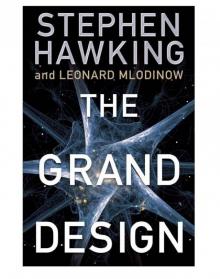 The Grand Design
The Grand Design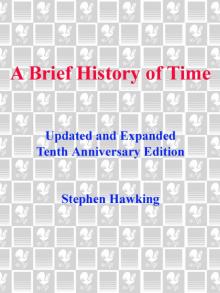 A Brief History of Time
A Brief History of Time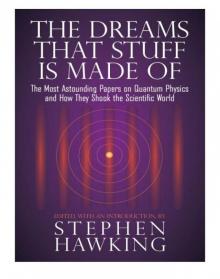 The Dreams That Stuff is Made of
The Dreams That Stuff is Made of My Brief History
My Brief History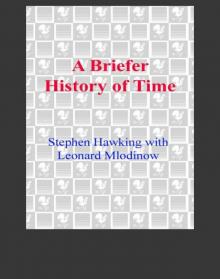 A Briefer History of Time
A Briefer History of Time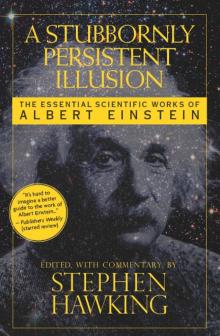 A Stubbornly Persistent Illusion
A Stubbornly Persistent Illusion George and the Blue Moon
George and the Blue Moon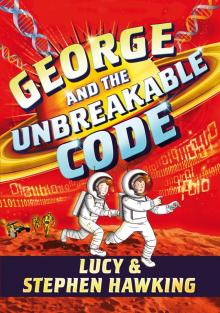 George and the Unbreakable Code
George and the Unbreakable Code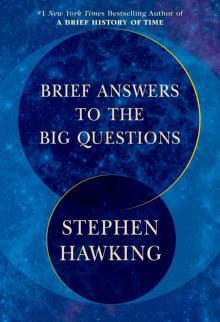 Brief Answers to the Big Questions
Brief Answers to the Big Questions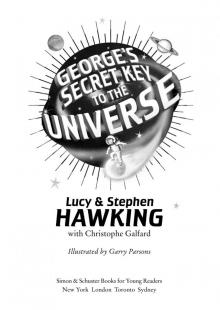 George's Secret Key to the Universe
George's Secret Key to the Universe